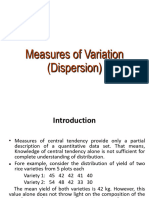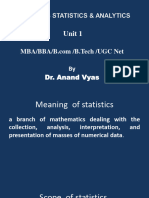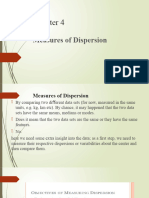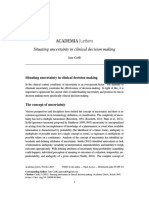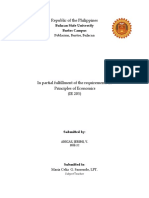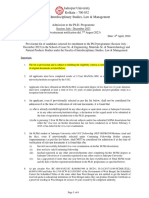0% found this document useful (0 votes)
45 views17 pagesProbability Theory
This document discusses probability theory and measures of dispersion. It defines probability as the occurrence of discrete or continuous events. Dispersion is the spread of data around the central location or mean. Measures of dispersion include variance, standard deviation, and coefficient of variation. These quantify how well the mean represents the data and the degree of dispersion relative to the mean. Skewness and kurtosis describe other properties of frequency distributions such as symmetry and pointiness. Box and whisker plots provide a visual representation of these dispersion properties.
Uploaded by
shivaCopyright
© © All Rights Reserved
We take content rights seriously. If you suspect this is your content, claim it here.
Available Formats
Download as PDF, TXT or read online on Scribd
0% found this document useful (0 votes)
45 views17 pagesProbability Theory
This document discusses probability theory and measures of dispersion. It defines probability as the occurrence of discrete or continuous events. Dispersion is the spread of data around the central location or mean. Measures of dispersion include variance, standard deviation, and coefficient of variation. These quantify how well the mean represents the data and the degree of dispersion relative to the mean. Skewness and kurtosis describe other properties of frequency distributions such as symmetry and pointiness. Box and whisker plots provide a visual representation of these dispersion properties.
Uploaded by
shivaCopyright
© © All Rights Reserved
We take content rights seriously. If you suspect this is your content, claim it here.
Available Formats
Download as PDF, TXT or read online on Scribd
/ 17

